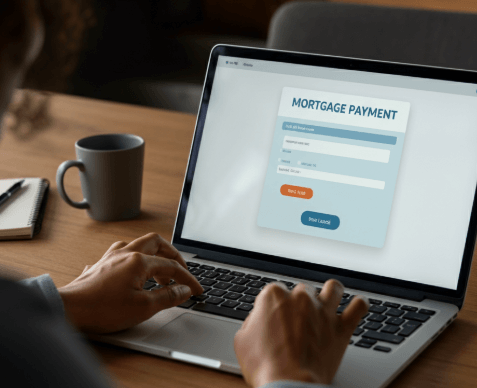When considering homeownership, many buyers focus primarily on the mortgage payments, yet several other key elements significantly impact the monthly payment. This post will explore and answer the critical question, “What factors the monthly payment on a home?” Delving beyond just the mortgage, we will discover extra expenses like property taxes, homeowners insurance, and maintenance fees contributing to the overall financial commitment of owning a home. Understanding what factors the monthly payment on a home entails ensures better budgeting and empowers potential homeowners to make well-informed decisions regarding their investments.
Steve Daria and Joleigh, seasoned real estate investors, stress the importance of considering all expenses that contribute to monthly housing costs. They recommend that prospective homeowners calculate mortgage payments and factor in property taxes, insurance, and ongoing maintenance. Buyers can develop a thorough grasp of their financial responsibilities, empowering them to make more informed investment decisions.
Understanding the Basics of Mortgage Payments
Before we dive into what factors the monthly payments on a home, it’s crucial to understand the basics of mortgage payments.
A mortgage payment generally includes two main components: principal and interest.

Principal
This is the part of your payment that goes towards reducing the loan balance.
For example, if you have a $300,000 mortgage and you make a $1,500 monthly payment, a portion of that payment will reduce the loan principal.
Interest
This is the cost of borrowing money from the lender.
The interest rate on your mortgage determines how much interest you will pay.
For instance, a 4% interest rate on a $300,000 mortgage will result in different interest payments compared to a 3% rate.
What Factors the Monthly Payment on a Home
Explore what factors the monthly payment on a home, going beyond just the mortgage to include taxes, insurance, and additional fees.
Property Taxes and Their Impact
Property taxes significantly affect your monthly home payments.
These taxes are assessed by local agencies and are based on your home’s assessed value.
- Assessed Value: Your home’s assessed value is determined by a local tax assessor and reflects the property’s market value. For instance, if your home is assessed at $250,000, your property taxes will be based on this value.
- Tax Rate: The property tax rate is set by local governments and varies by location. For example, if the tax rate is 1.2% and your home is assessed at $250,000, your annual property tax bill would be $3,000.
- Payment Frequency: Property taxes are often included in your monthly mortgage settlement and held in escrow. This means you make monthly payments toward your annual property tax obligation.
Get An Offer Today, Sell In A Matter Of Days
Homeowners Insurance Costs
Homeowners insurance secures you against damage or loss to your property and is typically required by lenders.
- Coverage Type: Insurance policies vary widely, covering events such as fire, theft, and natural disasters. For example, a standard homeowners insurance policy might cover damage from fire and burglary but not from flooding, which may require additional coverage.
- Policy Limits: Ensure your policy covers the cost to replace your home and belongings. For instance, if your home is worth $300,000, your policy should ideally cover at least that amount to fully protect you.
- Deductibles: Higher deductibles lower your premium but increase out-of-pocket costs in the event of a claim. For example, a policy with a $1,000 deductible might have a lower premium compared to one with a $500 deductible.
Private Mortgage Insurance (PMI)
If you make a down payment of less than 20% of the home’s purchase price, lenders often require Private Mortgage Insurance (PMI).
- PMI Calculation: PMI is typically calculated as a percentage of your original loan amount. For example, if your loan amount is $250,000, and your PMI rate is 0.5%, your monthly PMI premium would be $125.
- Loan-to-Value (LTV) Ratio: The loan-to-value ratio impacts PMI costs. A higher LTV ratio (i.e., a smaller down payment) results in higher PMI premiums.
- Cancellation: PMI can often be canceled once you have paid down enough equity in your home. For example, if you reach 20% equity, you can request to remove PMI, thus reducing your monthly payments.
Homeowners Association (HOA) Fees
If your home is in a planned community, condominium, or gated area, you may be subject to Homeowners Association (HOA) fees.
- Fee Structure: HOA fees can vary widely based on the amenities and services provided. For example, a community with a pool, gym, and landscaping might have higher fees compared to one with fewer amenities.
- Budget Transparency: Examine HOA budgets and financial statements to understand how fees are allocated. For instance, understanding how fees support community maintenance can help you gauge the value of the services provided.
- Special Assessments: Occasionally, HOAs may levy special assessments for unforeseen expenses or major repairs. For example, if a community needs to repair a large pool, the HOA might impose a special assessment on homeowners.
Utility Costs and Their Variability
Utility bills are a necessary aspect of homeownership and can fluctuate monthly.
- Energy Efficiency: Homes with high energy efficiency ratings may have lower utility costs. For example, homes with energy-efficient windows and insulation usually have lower heating and cooling costs.
- Seasonal Variations: Utility costs often vary with the seasons. For instance, heating costs in winter and cooling costs in summer can cause fluctuations in your monthly utility bills.
- Utility Providers: Utility rates can differ between providers. Comparing options can lead to savings. For example, choosing a utility provider with lower rates or promotional offers can reduce your overall expenses.
Maintenance and Repair Expenses
Regular maintenance and occasional repairs are integral to homeownership and can vary widely.
- Routine Maintenance: Budget for routine maintenance such as lawn care, cleaning, and HVAC servicing. For instance, setting aside $100 per month for maintenance can help manage these costs effectively.
- Unexpected Repairs: Set aside money for unexpected repairs like plumbing leaks or appliance breakdowns. For example, having a $1,000 emergency fund can help cover sudden repair costs without disrupting your budget.
- Renovations: If planning renovations, factor these costs into your overall financial picture. For example, if you plan a kitchen remodel costing $10,000, ensure your budget accounts for this expense.

Interest Rates and Market Conditions
Interest rates have a big impact on mortgage payments and overall affordability.
- Rate Fluctuations: Economic conditions can cause interest rates to rise or fall, affecting your mortgage payments. For instance, a drop in interest rates could decrease your monthly payments if you refinance your mortgage.
- Loan Type: Fixed-rate loans offer predictable payments, while adjustable-rate mortgages (ARMs) can lead to variability in payments. For example, an ARM might start with lower rates but increase over time, affecting your monthly payments.
- Market Trends: Monitoring real estate market trends helps evaluate property appreciation potential. For example, if the market is trending upward, your property value might increase, impacting your financial planning.
Strategies to Reduce Monthly Payments
To optimize your financial situation, consider these strategies to reduce monthly payments:
- Refinancing: Refinancing can lower your interest rate or extend your loan term, reducing monthly obligations. For example, refinancing from a 4% to a 3% interest rate can lower your monthly payment significantly.
- Increase Down Payment: A substantial down payment reduces your loan principal, which lowers monthly payments. For instance, increasing your down payment from 10% to 20% can reduce your monthly mortgage payment.
- Negotiate with Lenders: Explore options like loan modification or restructuring to better align with your budget. For example, negotiating a loan modification could result in more favorable terms and lower monthly payments.
Conclusion
Understanding what factors the monthly payment on a home beyond just the mortgage can provide a comprehensive view of homeownership costs. By considering property taxes, insurance, PMI, HOA fees, utilities, and maintenance, you can make well-informed decisions and effectively manage your budget.
**NOTICE: Please note that the content presented in this post is intended solely for informational and educational purposes. It should not be construed as legal or financial advice or relied upon as a replacement for consultation with a qualified attorney or CPA. For specific guidance on legal or financial matters, readers are encouraged to seek professional assistance from an attorney, CPA, or other appropriate professional regarding the subject matter.

